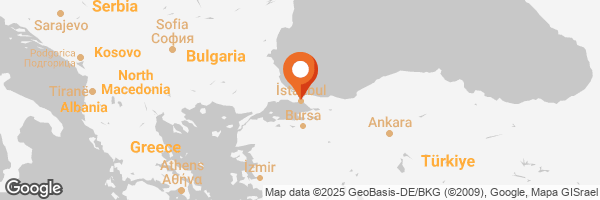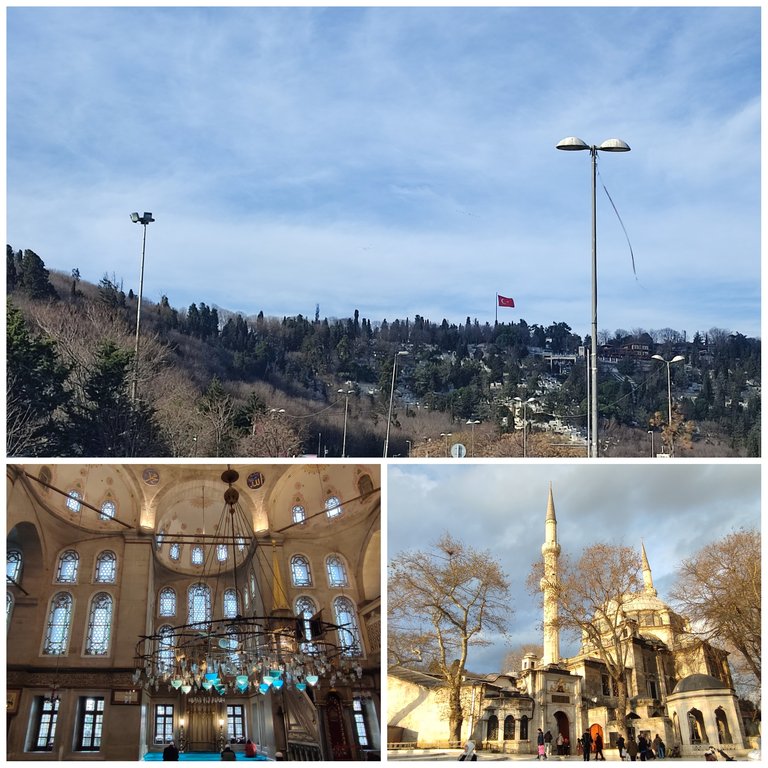
Hello everyone, I hope you are all well. I can't say that I am very well. I don't think I have ever said that I smoke before. I quit smoking 4 days ago and it is really hard for me. My wife is helping me a lot in this process. I hope I will be successful. That's why I am a little aggressive these days. 😅 Other than that, everything is fine. Last time I talked about the energy museum. Today I will talk about the Eyüpsultan mosque.
Herkese merhaba, Umarım keyifler yerindedir. Ben çok iyi olduğumu söyleyemem. Daha önce sanırım sigara kullandığımı söylememiştim. 4 gün önce sigarayı bıraktım ve beni bayağı zorluyor. Bu süreçte eşim çok yardımcı oluyor. Umarım başarılı olurum. Bu yüzden bu aralar biraz agresifim. 😅
Bunun dışında her şey yolunda. En son enerji müzesini anlatmıştım. Bugün Eyüpsultan camisini anlatacağım.
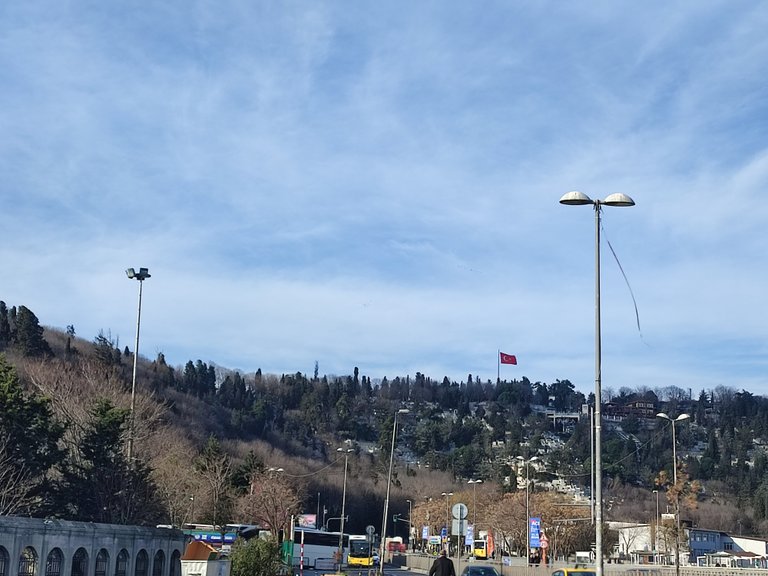
Before visiting Eyüpsultan, we were going to go up Pierre Loti hill, but we didn't want to wait because the line for the cable car was too long. So we postponed the Pierre Loti trip, but we will definitely visit it. It looks legendary even from below. Anyway, let's get back to Eyüpsultan.
Eyüpsultan'ı ziyaret etmeden önce Pierre Loti tepesine çıkacaktık ancak teleferik sırası çok fazla olduğu için beklemek istemedik. Dolayısıyla Pierre Loti gezisini erteledik ama muhakkak ziyaret edeceğiz. Aşağıdan bile efsane görünüyor. Her neyse dönelim Eyüpsultan'a.
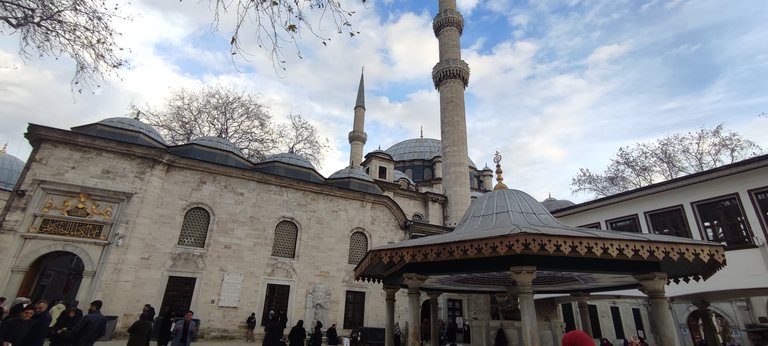
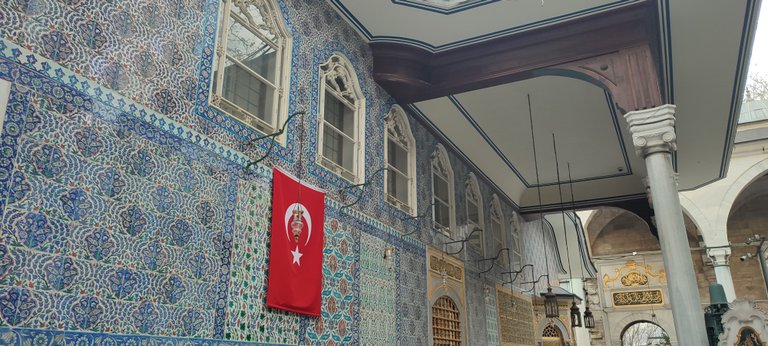
I visited this place for the first time with my wife. I had heard before that the mosque affected people spiritually. It really did. Even watching the pigeons in the courtyard was nice. When we stepped inside, a lovely lady offered us Turkish delight, or rather she offered it to everyone until the box was empty. And many people like this lady were offering it. People who have a wish or desire pray to God and then offer it to people.
Burayı eşimle birlikte ben de ilk defa ziyaret ettim. Caminin manevi olarak insanları etkilediğini daha önce duymuştum. Gerçekten öyle. Avludaki güvercinleri izlemek bile güzeldi. İçeriye adım attığımızda sevimli bir teyze elindeki lokumdan bize ikram etti, daha doğrusu kutu bitinceye kadar herkese ikram ediyordu. Ve bu abla gibi birçok kişi ikramlarda bulunuyordu. İsteği, arzusu olan kişiler Allah'a dua edip ardından insanlara ikram ediyorlar.
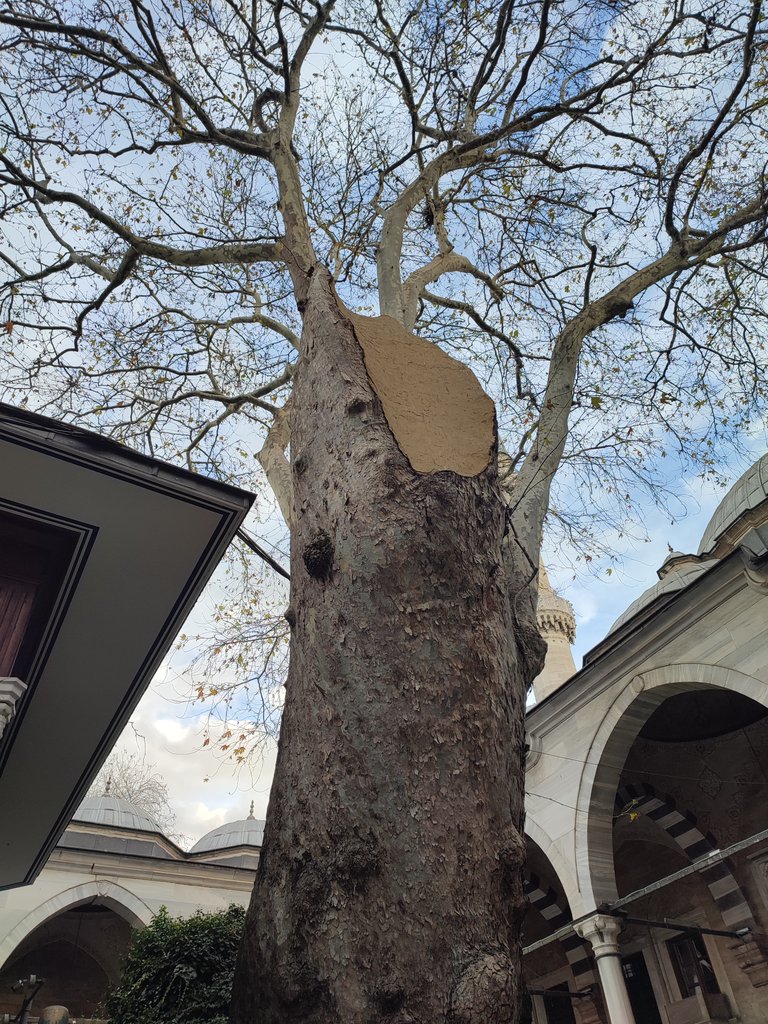
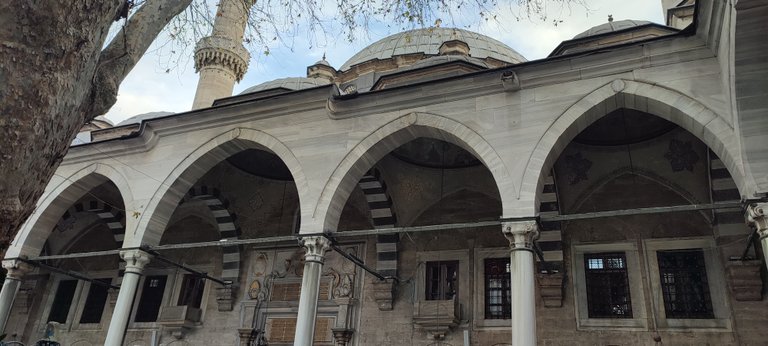
The historical plane tree in the mosque courtyard also welcomes visitors. Who knows how many thousands of visitors like us it has hosted. I wish it had a tongue and could share information from history with us. Some visitors throw coins to the tree to make their wishes come true. Frankly, I don't find this idea right.
Cami avlusundaki tarihi çınar ağacı da gelen ziyaretçileri karşılıyor. Kim bilir bizim gibi kaç bin ziyaretçi ağırladı. Keşke dili olsa da tarihten bizlere bilgi aktarsa..
Bazı ziyaretçiler dileklerinin kabul olması için ağacın sağına- soluna para atıyorlar. Açıkçası bu düşünceyi doğru bulmuyorum.
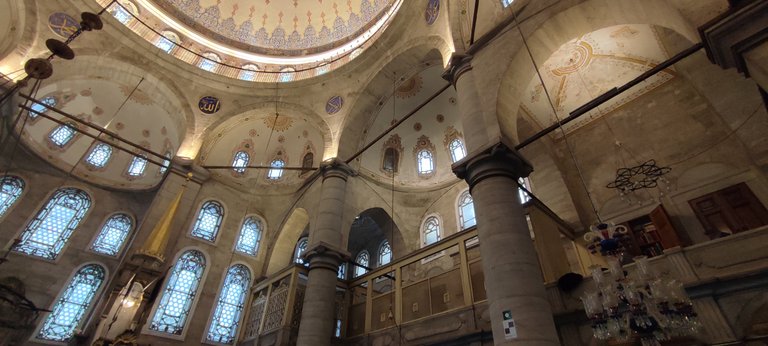
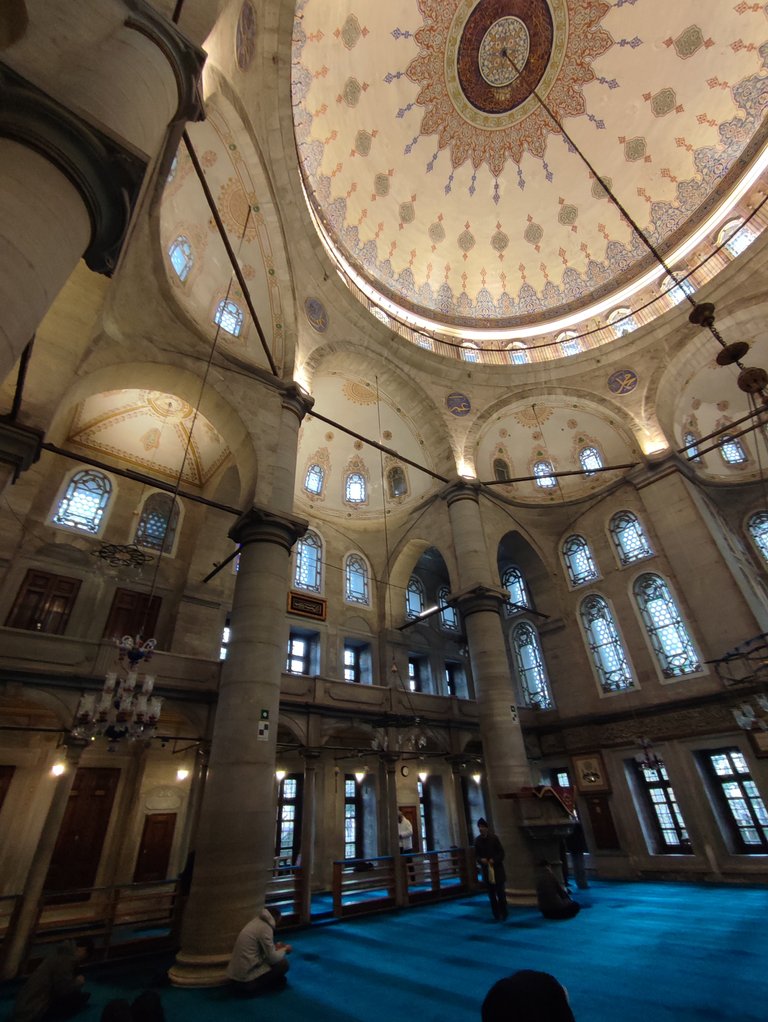
The inside of the mosque was very crowded. I had a little trouble getting in. While I was spending time inside, my wife was spending time in the women's section. The architectural structure of historical places has always impressed me. The interior architecture of the Eyüpsultan Mosque was also very impressive.
Caminin içi çok kalabalıktı. İçeriye girmekte biraz zorlandım. Ben içeride zaman geçirirken eşim de bayanlar bölümünde vakit geçiriyordu. Tarihi yerlerin mimari yapısı beni her zaman etkilemiştir. Eyüpsultan caminin iç mimarisi de gerçekten çok etkileyici idi.
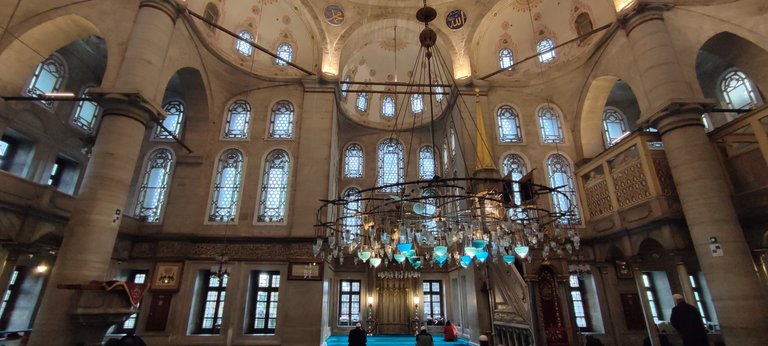
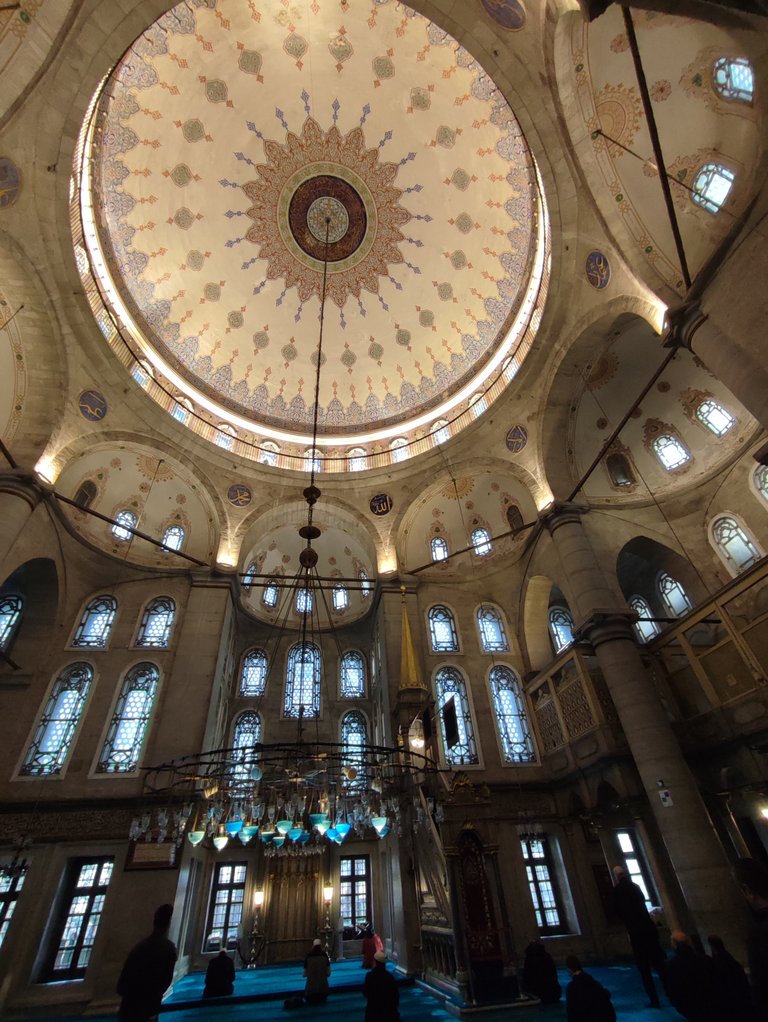
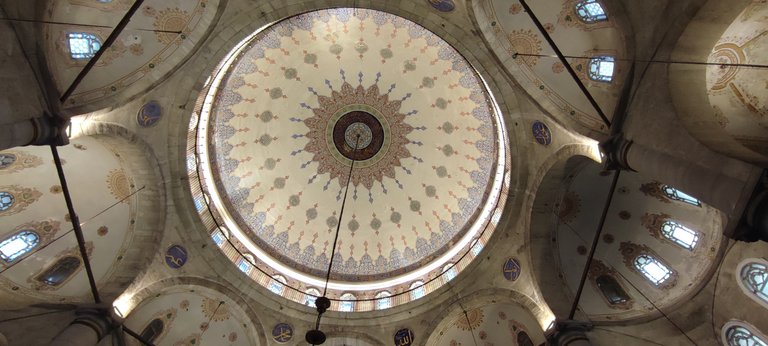
Another striking detail in the interior is the abundance of windows. When the sun's rays hit the inside through the windows, it offers a different atmosphere. The calligraphy on the top is also done with excellent workmanship. It is impossible not to be amazed.
İç kısımda dikkat çeken diğer bir detay ise pencerelerin çok fazla olması. Güneş ışınları pencereden içeriye vurduğunda farklı bir atmosferi sunuyor. Tepe kısmındaki hat sanatları da mükemmel bir işçilikle yapılmış. Hayran kalmamak elde değil.
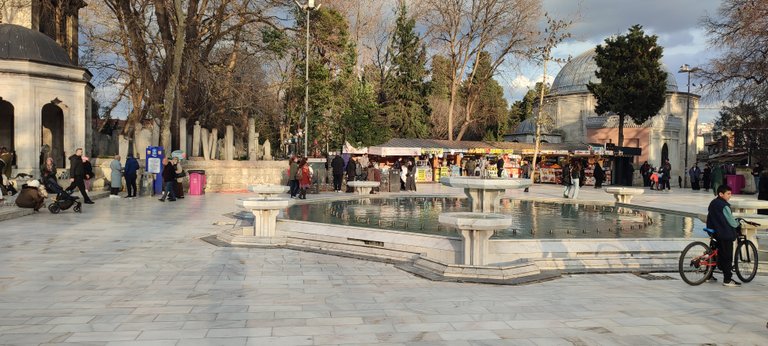
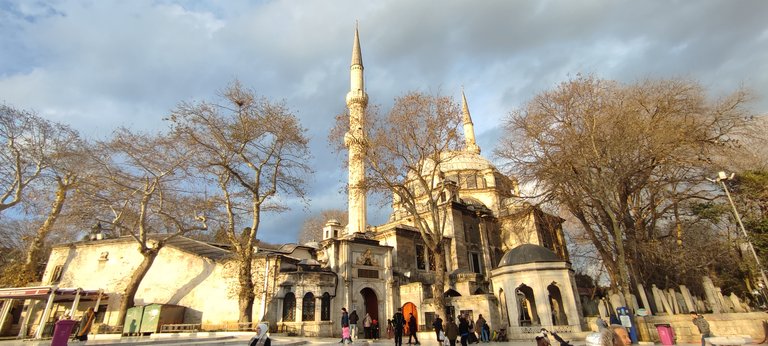
There was a charity stone on the outside of the mosque, but I forgot to take a photo. Let me briefly explain this culture that was inherited from the Ottomans. People who were well-off would throw any amount of money they wanted into the charity stone. After a certain period of time, the money that was collected would be distributed by the officials to those in need. The person who put the money inside the stone did not see who it was given to. Similarly, the person in need did not know who the money came from. It was a really nice practice. I do not know how long this tradition continues today.
Caminin dış kısmında sadaka taşı bulunuyordu ancak fotoğrafını çekmeyi unutmuşum. Osmanlıdan kalan bu kültürü kısaca ifade edeyim. Durumu iyi olan insanlar sadaka taşına istedikleri miktarda para atıyor. Belli bir süre sonra biriken bu parayı görevliler ihtiyaç sahiplerine dağıtıyor. Parayı taşın içine koyan kişi kime verildiğini görmüyor. Aynı şekilde ihtiyaç sahibi paranın kimden geldiğini bilmiyor. Gerçekten güzel bir uygulama. Günümüzde bu gelenek ne kadar devam ediyor bilgim yok.
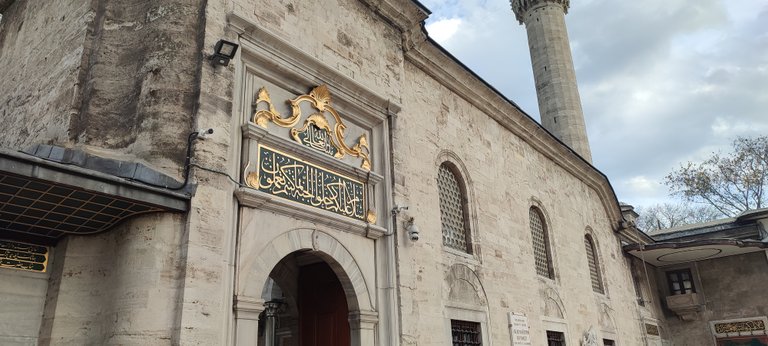
After spending some time in the mosque courtyard with my wife, we visited the nearby shops and bought candy. Our next stop was the Art Istanbul Museum. I will talk about this museum in my next post. My wife will share the places I have shared in the future and share her views, feelings and thoughts with us. I am eagerly waiting to hear from her. Thank you for reading. See you. 🙂
Eşimle cami avlusunda bir müddet vakit geçirdikten sonra yakın civarlardaki dükkanları gezip şeker aldık. Bir sonraki durağımız ise Art İstanbul müzesi idi. Önümüzdeki postta bu müzeden bahsedeceğim. Paylaşımını yaptığım yerleri eşim de ilerleyen zamanlarda paylaşıp görüşlerini, duygularını, düşüncelerini bizlerle paylaşacak. Sabırsızlıkla bekliyorum kendisinden.
Okuduğunuz için teşekkür ederim. Görüşmek üzere. 🙂
